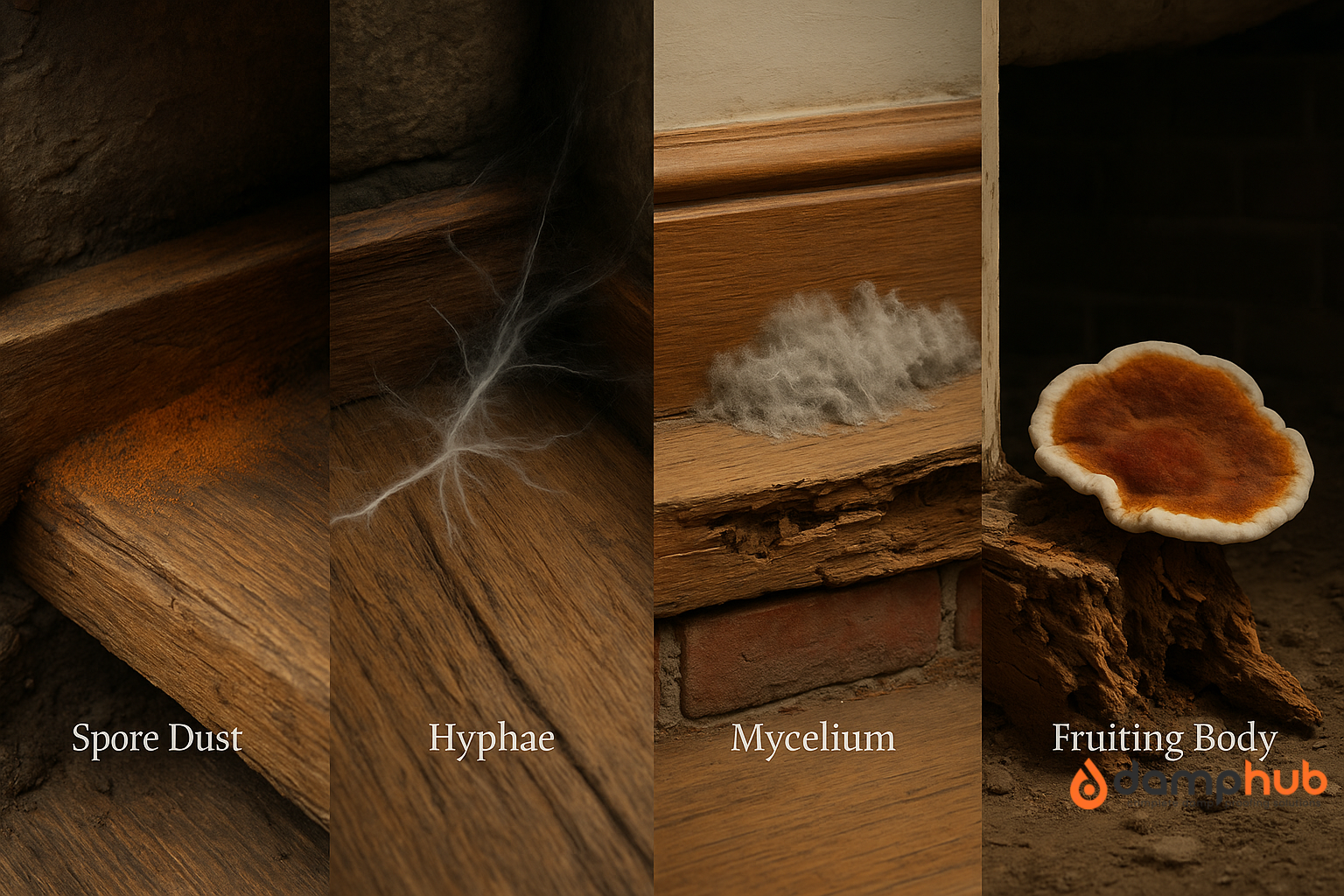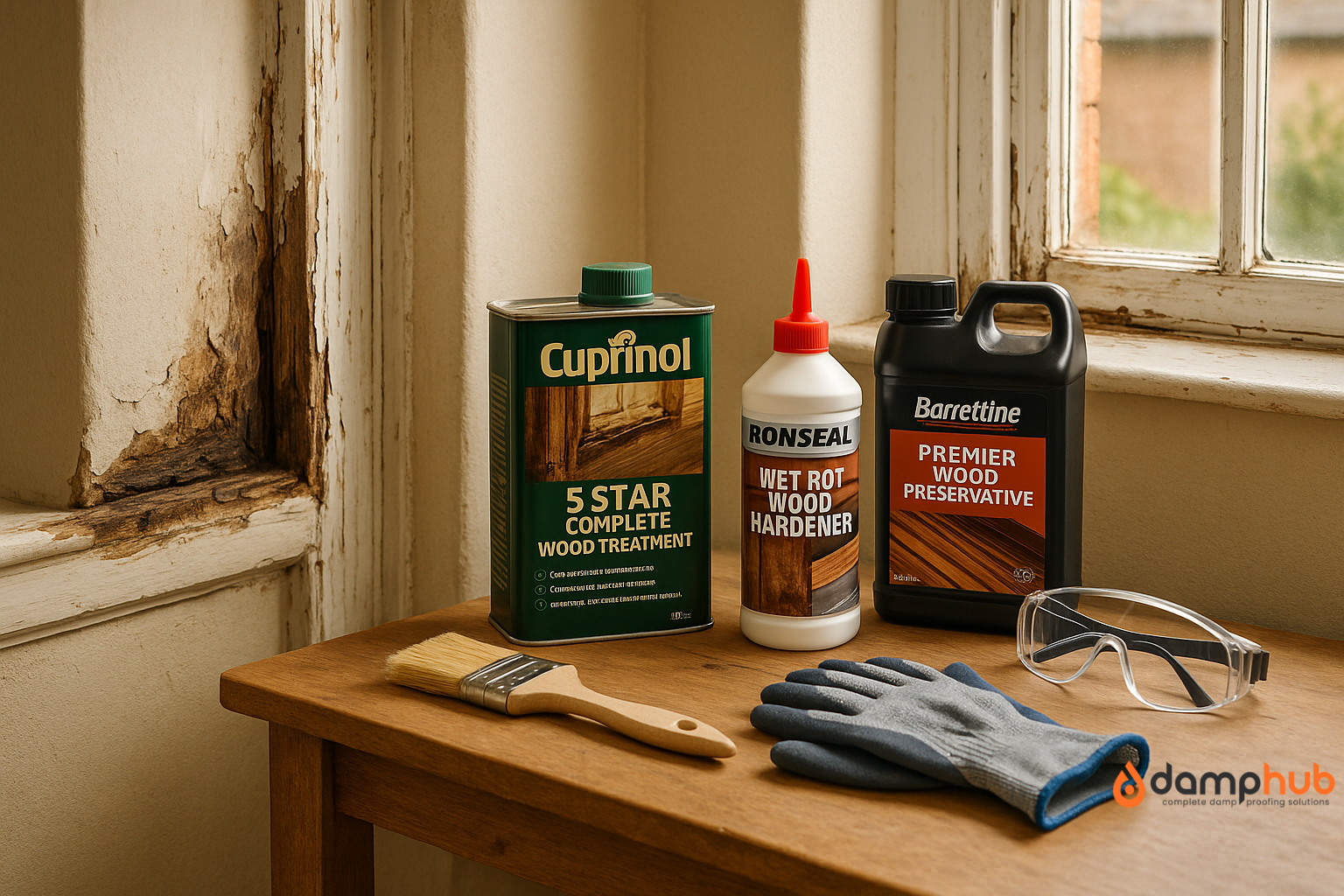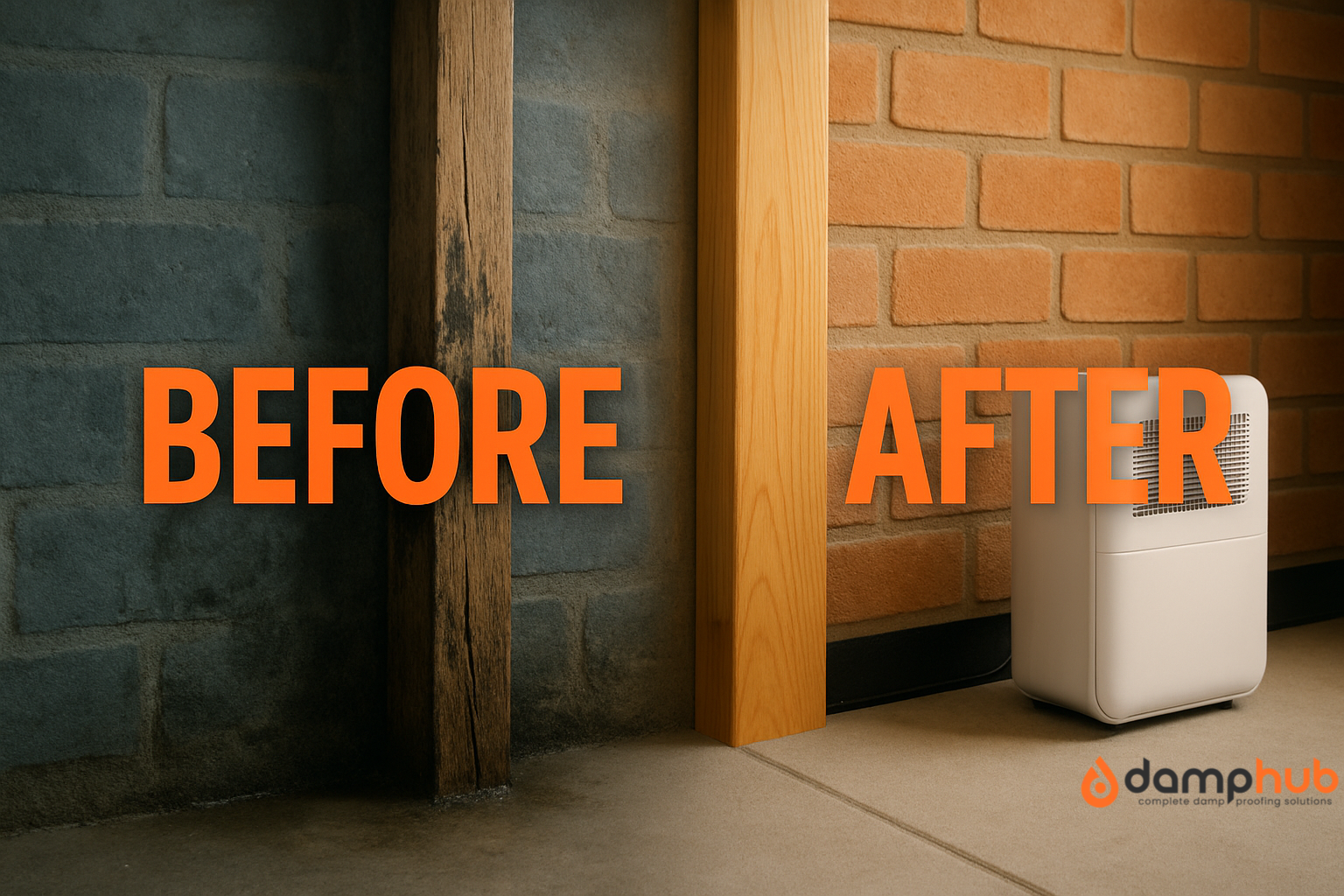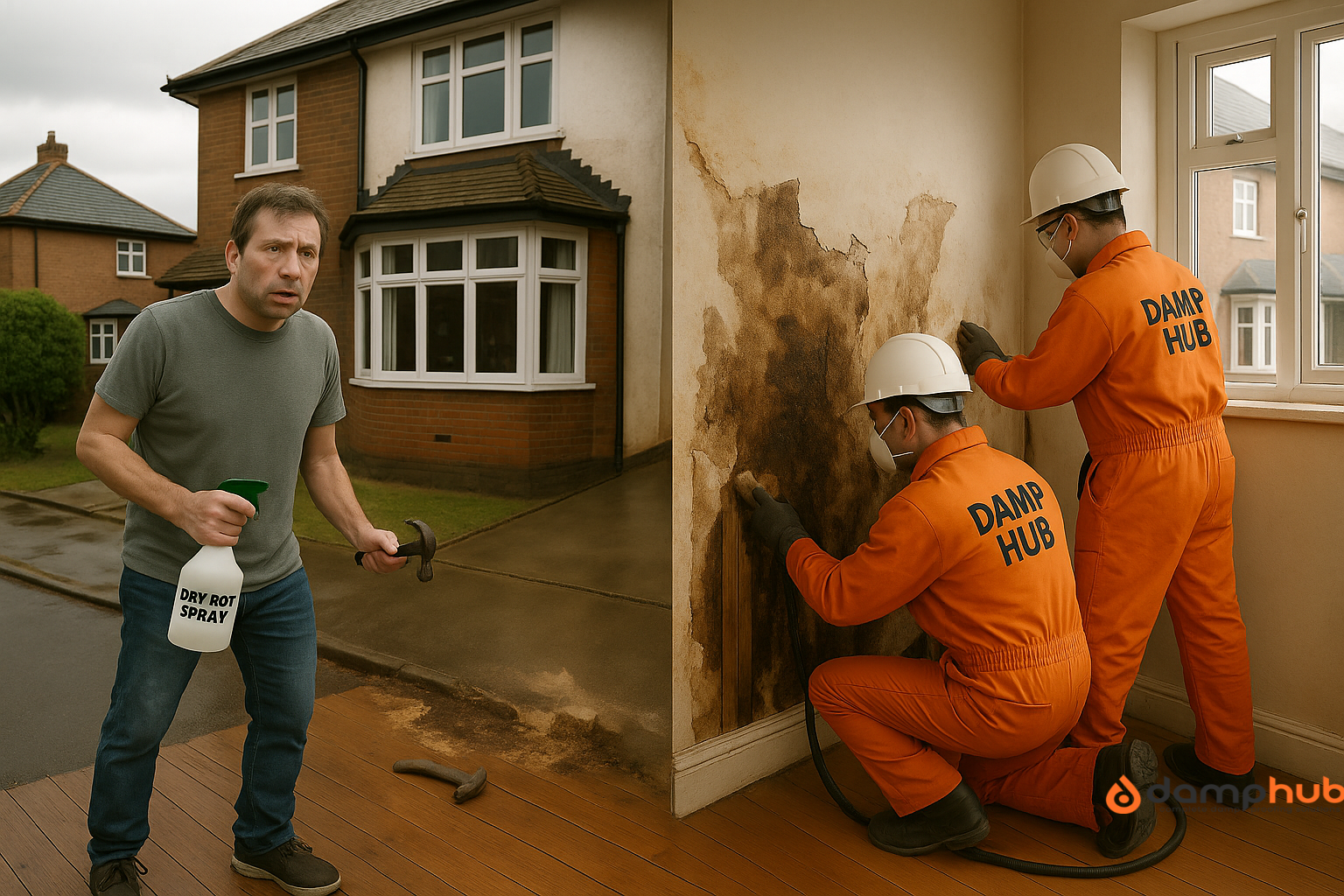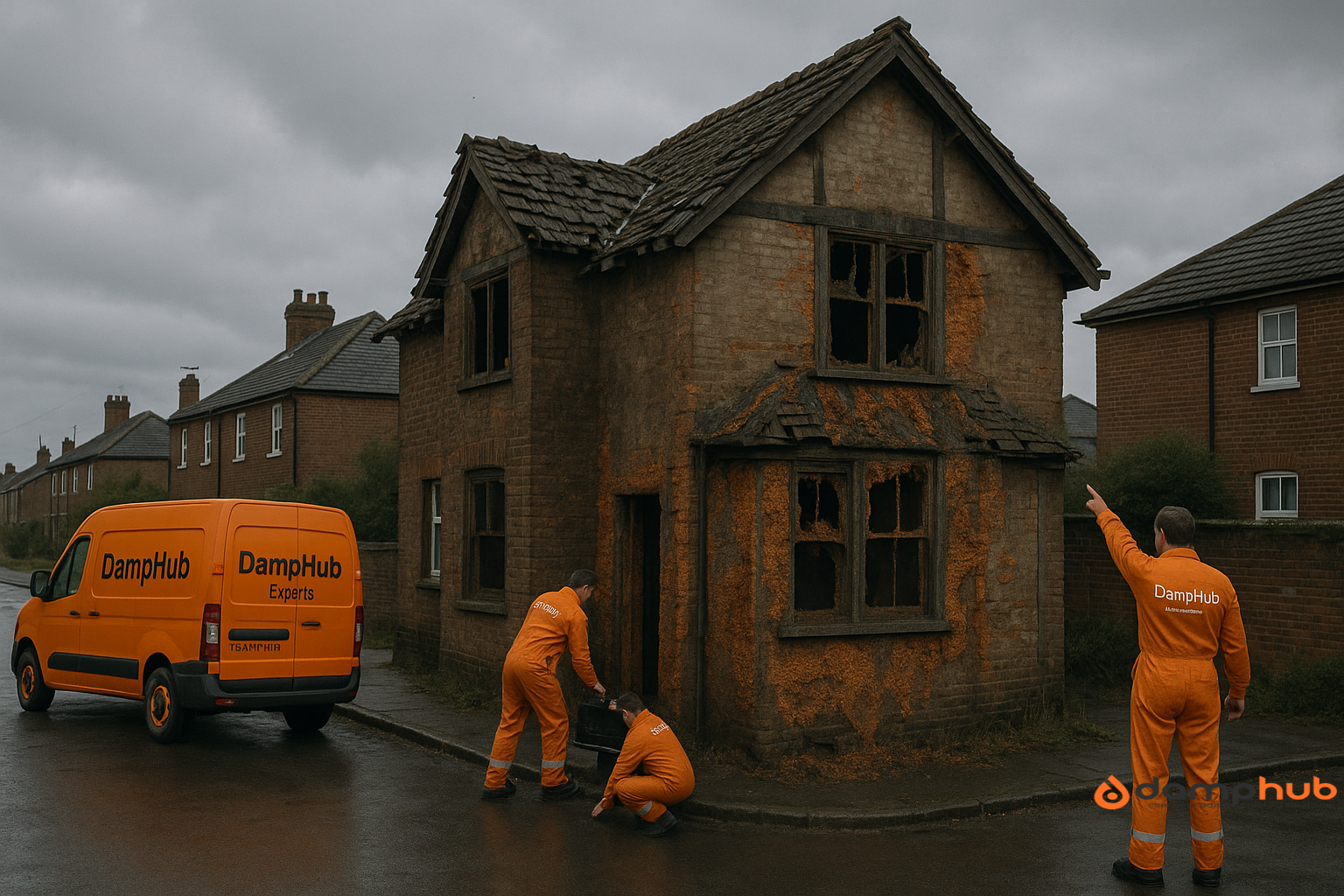
Quick Takeaway
- ✓ Most jobs cost £4,500–£6,000 to repair dry rot.
- ✓ Small patches (skirting, sills) start from £1,200.
- ✓ Structural damage (joists, floors) runs £3,000–£10,000+.
- ✓ Listed buildings often cost £15,000+ due to specialist work.
- ✓ Fix the damp, or dry rot will come back.
Dry rot is one of the most expensive timber problems a homeowner can face, not because the fungus itself is hard to kill, but because it often hides deep inside your floors, walls, or roof before you even notice it’s there.
So, what does it cost to fix dry rot?
In most cases, dry rot repair cost falls between £1,000 and £20,000. But the range is wide for a reason: every house is different. A bit of rot in a skirting board might cost £1,200 to sort, but once it’s spread under floorboards, into joists, or up into the roof timbers, the cost can jump fast.
The key is knowing what kind of job you’re dealing with, what drives those dry rot repair costs up (or down), and how to avoid overpaying or worse, missing something that comes back to bite you later.
Let’s walk through a full, no-nonsense breakdown of dry rot repair costs in the UK, with real numbers, realistic scenarios, and expert tips to help you budget smart.
👉 Also read: Dry Rot on Walls: Causes, Signs, and Expert Treatment Advice
Dry Rot Repair Cost Overview: What You’ll Usually Pay
Let’s get straight to the numbers. Here’s what most UK homeowners can expect:
Small Localised Repairs – £1,000 to £2,000
This usually covers a surface-level outbreak. A small area of rot in a skirting board, under a window sill, or affecting a single floorboard.
It includes cutting out the damaged timber, treating the area with a fungicide, patching up the plaster, and doing basic redecorating. It’s the cheapest type of job, and if caught early, the most manageable.
Moderate Spread Across One Room – £2,500 to £7,500
At this stage, the dry rot has likely moved beyond just the visible damage. It could involve joists, wall plates, or structural timbers below floor level.
This cost range typically includes timber replacement, full chemical treatment, moisture investigation (and possibly repair), replastering, and redecoration of the affected room.
Widespread Structural Damage – £8,000 to £20,000+
If the fungus has spread across multiple rooms, into roof rafters or major floor structures, this is a full-on restoration job.
It includes not just treatment and timber replacement, but often subfloor ventilation upgrades, damp proofing, full replastering, flooring reinstatement, and sometimes even roofing or masonry repair.
In practice, the average UK homeowner dealing with a non-trivial dry rot problem will end up paying somewhere between £4,500 and £6,000 — enough to cover structural repairs, fix the moisture source, and redecorate.
Regional variation:
Where you live plays a role, too. In parts of the North or rural areas, simpler jobs may come in around £1,200–£1,500, while full-scale work tops out near £10,000.
In London and the South East, expect to start at a minimum of £1,500, and full-structure work can easily exceed £15,000 due to labour rates and property types.
👉 Related article from us: Identifying Dry Rot Symptoms
Dry Rot Repair Cost Breakdown by Job Scale
Not all dry rot repairs are created equal. Some are quick in-and-out jobs handled in a day, while others can take weeks and involve serious structural work.
To get a clearer idea of what you’re likely to spend, it helps to look at how costs scale depending on the size and severity of the damage.
Here’s a more detailed explanation of each cost tier:
Very Minor Localised Repair
Typical repair cost: £1,000 – £2,000
This is your best-case scenario. The dry rot has only affected a small section of timber, usually visible and easy to access. Common examples include:
- A small run of skirting board
- One or two rotten floorboards near an external wall
- A window sill or door frame that’s showing early signs of decay
The repair process here is fairly light: remove the affected timber, treat the surrounding area with a fungicidal solution, allow it to dry fully, and make good with replacement timber and decoration.
If plaster or paint has been affected, a quick patch-up is included. These are often done in a single visit or over two days.
This range also applies if the property is in a cheaper region where even slightly bigger jobs don’t carry London prices.
Light Timber Spread in One Room
Typical cost: £2,500 – £4,000
In this range, dry rot has moved beyond surface trim and is starting to affect structural timber. It might include:
- Decayed joists under a timber floor
- Damp running into wall plates or internal partitions
- Spread behind fitted units or under the flooring
Access becomes trickier, and you’ll need more than just a quick fix. Contractors might have to lift floorboards, cut into walls, or remove parts of fitted furniture to get to the problem.
On top of treatment and timber replacement, expect to pay for plastering, painting, and possibly re-laying flooring or skirting.
It’s also at this level that moisture source investigation becomes essential; otherwise, the rot will just return.
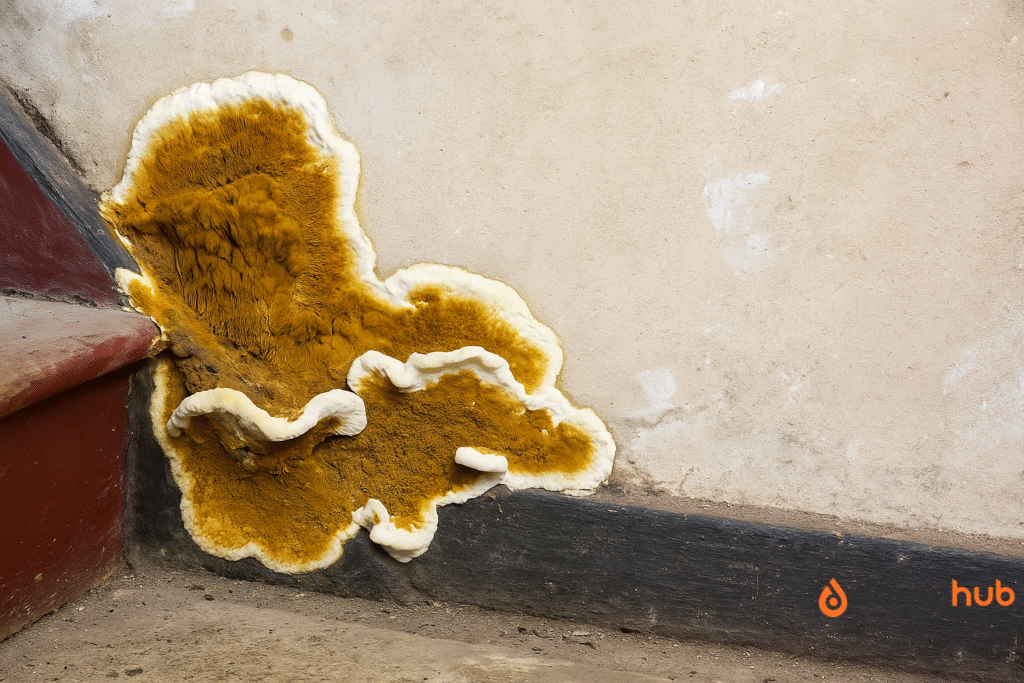
Moderate Multi-Room Spread
Typical cost: £4,000 – £7,500
This is where the work starts to feel like a renovation. Here, the rot may have crept across multiple rooms or floor levels, often via joists, stud walls, or flooring structures. You’re likely looking at:
- Significant joist or beam removal and replacement
- Chemical treatment across multiple areas
- Rebuilding of floors, wall bases, or partition frames
- Full replastering and painting in each room affected
The biggest factor here is time. Contractors will need days or even weeks, especially if floor levels need to be rebuilt or integrated with new damp control systems.
There may also be higher waste disposal, scaffold hire, and labour costs.
And depending on how deep the damage goes, you’ll likely need a specialist damp contractor rather than a general builder.
Major Structural Work
Typical cost: £8,000 – £15,000+
This is full-scale dry rot remediation. It usually involves:
- Large areas of structural timber compromised
- Moisture routes tracked into walls, roofing, or subfloors
- Specialist joinery, major demolition, and reinstatement
- Work in difficult-to-access areas like roof voids or basements
Repairs at this level aren’t just about fungus removal. They’re about rebuilding critical parts of your home.
Expect every trade to be involved: structural carpenters, plasterers, damp specialists, flooring installers, and sometimes even roofing or brickwork contractors.
On top of that, some areas may need enhanced ventilation (like air bricks or subfloor fans) or reinstating damp proof courses.
And if the home is occupied during work, expect extra cost for temporary floor protection or phased work.
Large or Listed Building Project
Typical cost: £15,000 – £20,000+
Listed buildings come with their own rules, and they rarely allow for shortcuts. If you’re dealing with dry rot in a heritage or Grade II-listed property, the dry rot repair cost will jump significantly because:
- You’ll need to use breathable materials like lime plaster or clay paints
- Joinery has to match period details, often custom-made
- You may need listed building consent just to carry out work
- Contractors need to follow stricter preservation standards
You’re not just fixing dry rot here — you’re preserving historic fabric. That means more time, more oversight, and more care. Expect higher costs in labour, materials, and even insurance.
🟠 Good to know
- ✓ Even if your dry rot job sounds small, contractors often uncover more damage once they start stripping back timber. Always build in a 10–15% contingency to your budget, especially for anything involving floors, old joists, or hidden wall plates.
3. What Drives Variation in Dry Rot Repair Cost?
Dry rot isn’t one of those problems you can price blindly. Two houses on the same street might have completely different dry rot repair costs, even with similar-looking damage.
The total you pay depends on several layered factors, and the deeper you look, the clearer it becomes why one quote might be £2,000 and another might be pushing £12,000.
Here’s what influences dry rot repair costs:
1. Extent of Infestation
This is the single biggest factor. Dry rot spreads through timber by feeding on moisture and organic material. If you’ve caught it early, say in a skirting board or window surround, the damage may be limited and easy to cut out.
But dry rot doesn’t always stay put. Once it gets into floor joists, roof timbers, or wall plates, you’re dealing with structural components that can’t simply be patched over.
A single affected beam might span multiple rooms. Worse, the fungus often travels further than it appears, which is why contractors sometimes need to open up large areas just to be sure.
So, the more spread-out and hidden the rot is, the more time and labour it takes to fix. And the higher the overall cost.
2. Access Complexity
The second major dry rot repair cost driver is how easy it is to get to the affected area.
Some dry rot jobs are relatively straightforward. Floorboards can be lifted, and the rot is visible and reachable.
But in many cases, the problem lies underneath tiled floors, fitted kitchens, behind bathroom units, or even embedded within masonry. In upper floors, access might require lifting ceilings from below or working in tight loft spaces.
All this increases labour time and equipment needs. If scaffolding is required to reach roof timbers or if large furniture needs removing and refitting, expect the quote to rise accordingly.
3. Moisture Source Repairs
Treating the fungus is only one part of the job. To stop it from coming back, you must eliminate the source of moisture that allowed it to grow in the first place. This is where some of the hidden costs come in.
In some cases, the issue is minor — a bit of condensation or an isolated leak. In others, you might be dealing with failed gutters, broken downpipes, leaking roofs, blocked air bricks, or a compromised damp proof course.
If remedial damp work is needed, it can easily add £500 to £3,000 to the total cost, depending on the scale. For example:
- Replacing a leaking gutter might cost £150
- Rebuilding a damaged subfloor with proper ventilation might run closer to £2,000
- Installing a new damp-proof course could exceed £3,000 in complex buildings
Cutting corners here almost always leads to recurrence. A reliable contractor will always include a moisture source investigation in their report. And if they don’t, ask.
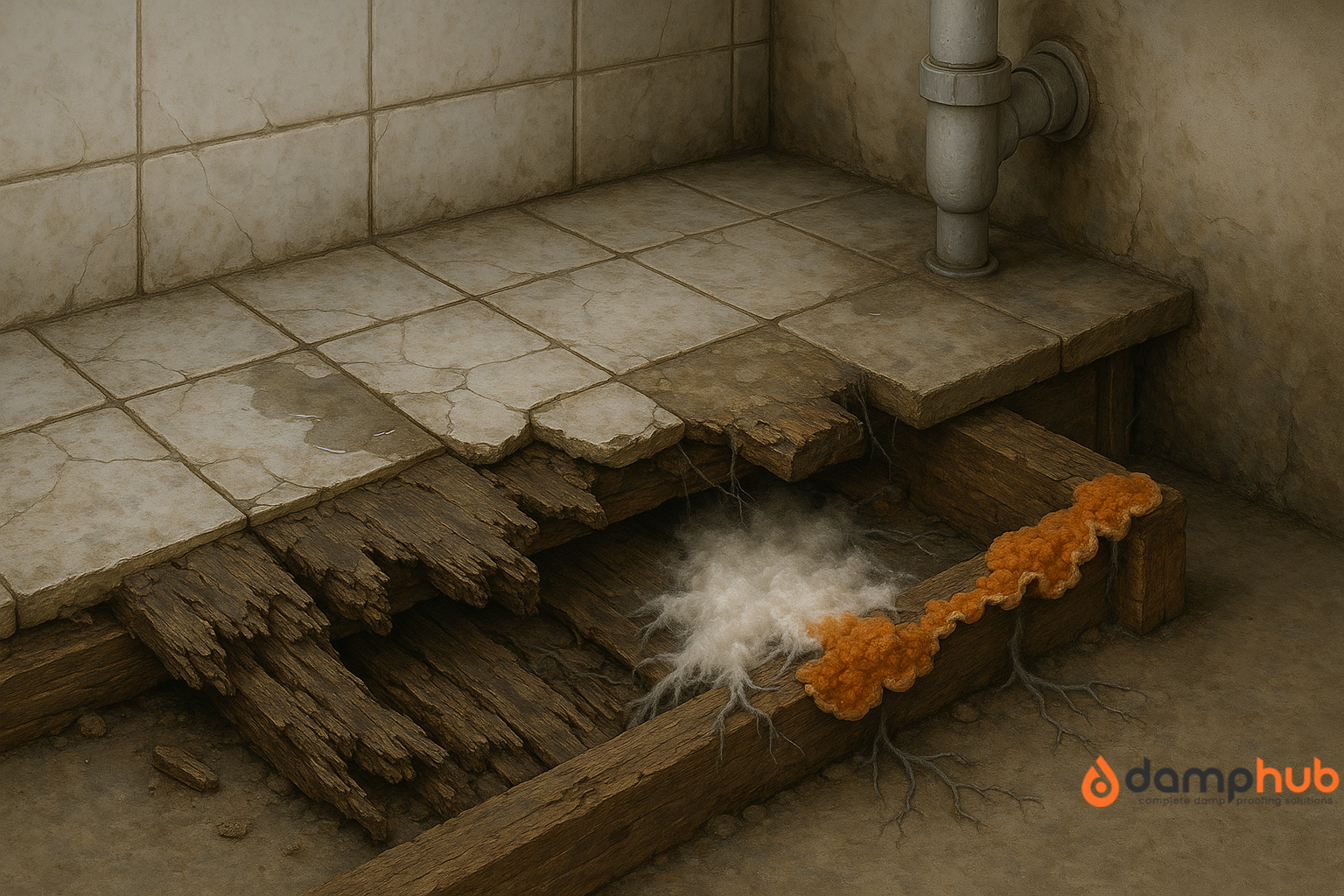
4. Types of Materials Used
Not all dry rot treatments are created equal. The materials chosen can affect both longevity and cost.
Some contractors use generic pressure-treated softwood and off-the-shelf plasterboard. It’s cheaper and faster, but may not be appropriate for older or breathable properties.
In heritage buildings, replacements often need to be like-for-like hardwood joists, lime-based plaster, specialist breathable membranes, or epoxy resin repairs.
Even small details like the use of stainless steel fixings, breathable insulation, or period-accurate trims can add hundreds of pounds to the bill.
Matching timber size, grain, and profile also adds labour time, especially where listed building requirements apply.
5. Finishing Quality
There’s a big difference between a repair job that leaves you with bare plaster and one that includes full redecoration.
Many cheaper quotes stop at the structural repair stage, meaning the rot is removed, the wall is patched, and that’s it. If you want walls repainted, floors sanded, or skirting reinstated to match existing finishes, this is usually priced separately.
Full redecoration in a mid-sized room can add anywhere from £500 to £1,500, depending on the level of finish. This includes:
- Plaster skimming and drying time
- Painting and preparation
- Floor sanding or new coverings
- Replacement of trim, sockets, or fittings
If you’re budgeting, always ask what the quote includes and whether finishing is part of it.
6. Labour Rates and Region
Where you live plays a major role in your final bill. Labour rates vary widely across the UK, and so do the kinds of properties most affected by dry rot.
For example, in London, the South East, and parts of the Cotswolds, specialist trades often charge £50 to £80 per hour. In the North, Wales, or rural areas, you might pay closer to £35 to £50 per hour.
The property type also matters. Dense terraced housing or basement flats can be more difficult to work in, especially if access is restricted or noisy work is limited by tenancy agreements or shared walls.
All of this adds to the overall time and cost of the job.
7. Guarantees and Accreditation
Some contractors offer guarantees of up to 20 years for their dry rot treatments, often insurance-backed. These give buyers and mortgage lenders peace of mind, especially if you’re planning to sell the property.
But those guarantees come at a price.
Accredited firms will typically build the cost of the guarantee into their quote, which might increase it by 10 to 15 per cent.
You’re paying for the additional paperwork, inspections, and often a higher standard of materials or workmanship to meet the guarantee conditions.
Uninsured or non-accredited firms may quote less, but it’s a gamble, especially if the work is hidden in floors or walls where you won’t notice if it fails until months or years later.
Real Dry Rot Repair Cost Examples Based on Job Scenarios
While national averages are useful, they don’t always help you picture what you’re in for. That’s why it’s helpful to look at real-world dry rot repair scenarios.
These examples reflect the kind of jobs that contractors deal with every day, from surface-level repairs to full-on structural restorations.
Each one outlines the key details, estimated cost, and common variables that can affect the final bill.
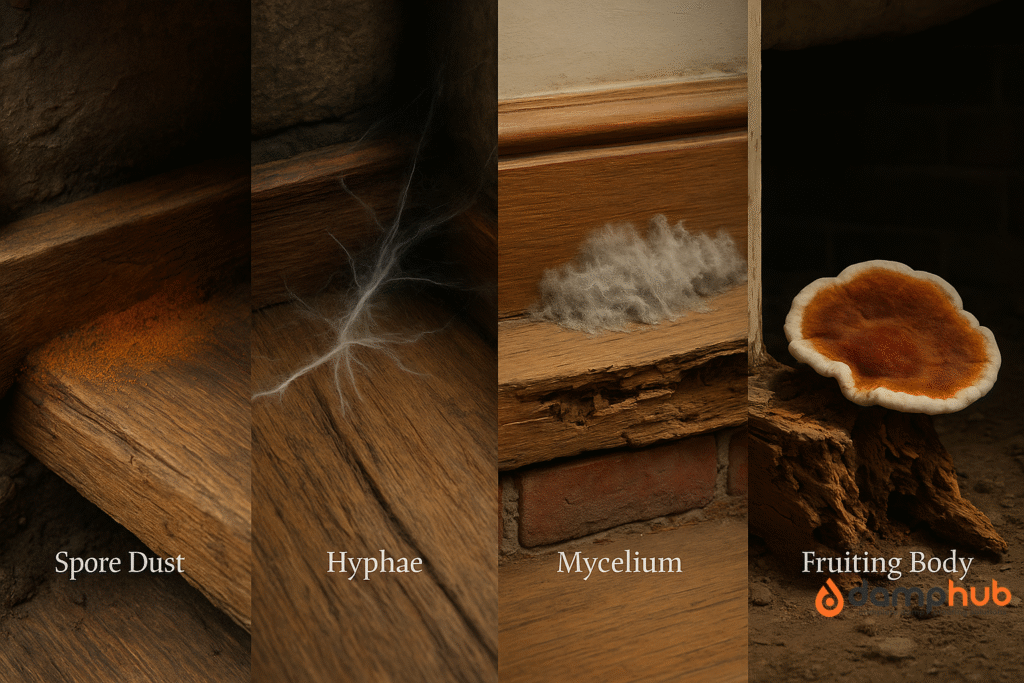
1. Scenario A – Localised Spot Repair in One Room
Estimated dry rot repair cost: £1,200–£1,800
A homeowner spots some cracking paint and crumbling skirting in the corner of their front room. Upon investigation, it turns out to be a small dry rot outbreak linked to a leaking downpipe just outside the wall.
The contractor cuts out the affected skirting and replaces two adjoining floorboards that show early signs of decay. After applying a fungicidal treatment to the surrounding timbers and allowing drying time, the area is replastered and repainted.
In this case, the job only takes a day and a half. There’s minimal disruption, and the damp issue is easy to fix with a basic repair to the guttering.
The low dry rot repair cost reflects the fact that access was simple, no structural timber was affected, and the moisture source was obvious and shallow.
💡 Pro tip
- ✓ Even for small jobs like this, it’s worth allowing a contingency of around £200 in case hidden rot extends further than expected. Floor voids, in particular, can hide more damage than you think.
2. Scenario B – Moderate Spread Over Two Rooms
Estimated dry rot repair cost: £3,500–£6,500
This time, the homeowner notices soft floorboards in the hallway and a persistent musty smell that’s been getting worse for months. A specialist survey reveals dry rot in the joists running under the hallway and into the adjacent living room.
To assess the damage, contractors remove a large section of the flooring. They find that the rot has taken hold in three floor joists and part of the wall plate along the base of an internal partition. One wall is damp, likely from an airbrick that’s been blocked by soil outside.
The job involves:
- Removing and replacing three joists
- Treating the surrounding timbers and masonry
- Replastering one wall
- Repainting both rooms
- Reinstating suspended flooring
- Re-opening and protecting external airbricks
Drying time adds a few days to the schedule, and the client chooses to repaint themselves to save costs. The final quote comes in around £4,800, but could have gone higher with full redecoration included.
This is a typical example of how even mid-range jobs involve multiple trades, minor damp work, and partial reinstatement of finishes — all of which push up the dry rot repair cost.
3. Scenario C – Full Structural Infestation
Estimated dry rot repair cost: £10,000–£18,000
Here, the homeowner inherited a neglected Victorian terrace. The upstairs floor feels bouncy, some ceilings have yellow staining, and there’s visible cracking in the walls.
A full damp and timber survey confirms extensive dry rot: it’s spread through first-floor joists, wall plates, and up into the loft’s roof timbers.
The job becomes a major project, requiring:
- Full removal and replacement of floor joists in two upstairs rooms
- Replacement of a rotten wall plate in a load-bearing wall
- Repair a leaking valley gutter feeding the outbreak
- Chemical treatment throughout the voids
- Removal and reinstatement of large sections of the ceiling
- Lime plaster reinstatement and decoration throughout
The homeowner also chooses to upgrade insulation and ventilation while the floor is up, which adds cost but improves long-term prevention.
A scaffold is needed to access the roof timbers, and drying time stretches the job to just over three weeks. All work is guaranteed for 20 years under a specialist contractor scheme. The final cost lands just under £16,000.
This scenario shows how costs escalate with widespread structural rot, particularly when difficult access, plasterwork, and roofing are involved.

4. Scenario D – Heritage or Listed Building Restore
Estimated dry rot repair cost: £15,000–£20,000+
In this example, the property is a listed Georgian farmhouse with original floorboards, timber beams, and lime plaster. A dry rot outbreak has been missed for years due to poor ventilation and rising damp at the rear of the property.
The homeowner is required to work under the listed building guidelines. That means:
- Lime-based materials only
- Retention of original timber wherever possible
- Specialist joinery to match period mouldings
- Planning and heritage officer approval
- Hand-applied finishes rather than modern paints
The affected area includes flooring and wall framing in three rooms, plus an old cellar with timber supports.
Contractors carefully lift and label each timber, replacing only where decay is advanced. Moisture management includes installing passive subfloor ventilation and a discreet damp proof course that meets heritage standards.
Because of the attention to detail, labour time, and specialist materials involved, the job stretches to £19,500. But the result is seamless — the building retains its character, and the owners are issued a 30-year guarantee.
Listed buildings always demand more from a budget. Even straightforward work can take longer due to permissions, inspections, and sourcing compatible materials.
Tips to Keep Dry Rot Repair Costs Under Control
a) Get a Full Damp and Timber Survey
Don’t rely on a guess or a free contractor inspection.
A proper survey pinpoints the cause, extent, and best repair method, saving you from overspending or treating the wrong issue. It also gives you written proof to compare quotes properly.
An independent damp and timber report costs around £150–£300, but it could save you thousands in unnecessary work.
For more guidance, read our other article on Who Should Pay for a Damp and Timber Report?
b) Don’t Delay Repairs
Dry rot spreads quickly, sometimes through walls to reach other timbers. The longer you leave it, the more structural damage it causes.
A small fix today could triple in cost if ignored for a few months. Even if you can’t afford full treatment now, improving airflow or isolating the area can slow it down.
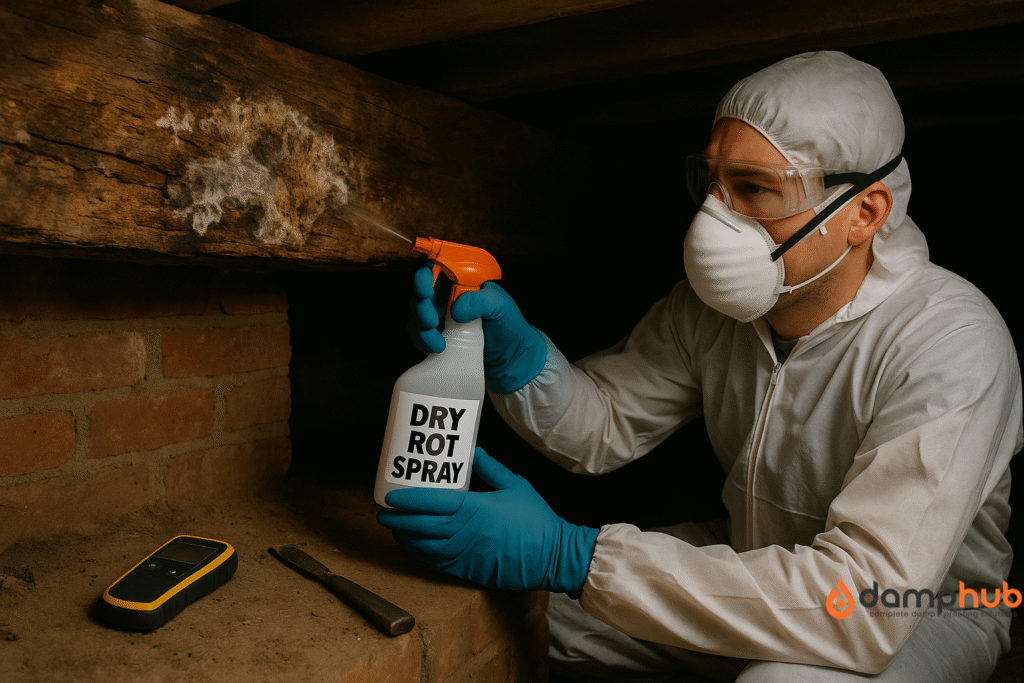
c) Get Multiple, Detailed Quotes
Always get three quotes and make sure they’re itemised. A cheap price might mean cutting corners, like skipping plaster removal or using lower-grade timber.
Ask exactly what’s included and what kind of guarantee is offered. This lets you compare properly and spot any red flags before committing.
d) Improve Ventilation and Stop Leaks
Rot thrives in damp, stagnant conditions. Fix leaks, unblock vents, and keep air moving through floor voids or wall cavities. These basic steps don’t cost much but make a big difference.
Better airflow can slow the fungus and reduce the risk of future outbreaks, even before major repairs begin.
e) Avoid DIY Sprays and Shortcuts
Off-the-shelf rot killers might seem cheap, but they’re rarely enough. Dry rot lives deep inside timber and can reach through masonry.
Unless infected material is removed and the source of moisture is fixed, the fungus will come back. Skip the sprays, invest in proper treatment to avoid paying twice.
Final Thoughts
Dry rot repair isn’t a one-size-fits-all job, and neither are the dry rot repair costs. What looks like a small patch of damage can sometimes reveal widespread structural issues once the surface is opened up.
That’s why quotes vary so widely and why it’s important not to judge the price until you understand what’s being done.
If you’re comparing quotes, don’t just look at the bottom line. Ask what’s included, how the moisture source will be addressed, what materials are being used, and whether finishing is covered. A cheaper quote that skips these steps can end up costing more in the long run.
And remember – dry rot isn’t just a cosmetic issue. Left untreated, it can cause serious structural problems. So if you suspect it, don’t delay. A good specialist will not only fix the damage but also help you prevent it from coming back.
Answering Your Questions on Dry Rot Repair Costs

-
Can you stop dry rot once it starts?
You can, but you’ve got to be quick about it. Dry rot’s not the type to just sit quietly in one spot.
Once it’s found a damp bit of timber, it’ll keep creeping until you cut off its food supply.
That means two things: get rid of the damp and get rid of the infected wood. If you only treat one and not the other, it’s like locking the front door but leaving the back wide open.
-
What kills dry rot in wood?
The short answer? A proper fungicidal treatment — the industrial-strength kind, not the little spray bottle from the DIY shop.
But it’s not just about what you spray or paint on. The infected timber usually needs to be cut out completely.
Think of it like pulling weeds: you’ve got to get the roots, not just snip the leaves.
-
How to repair rotting wood without replacing it?
If it’s just surface damage, you might get away with a wood hardener or resin repair.
That’ll soak in, bind the fibres, and give it a bit more life.
But if the wood’s soft enough to poke your finger through, forget patching — you’re better off swapping it out. Repairs without replacement only work on very early-stage decay.
-
Can dry rot come back after treatment?
Yes — and faster than you’d think if the moisture problem’s still there.
You can throw all the chemicals in the world at it, but if the timber stays damp, the fungus will start over.
That’s why good contractors won’t just treat the rot; they’ll track down the leak, bad ventilation, or damp that let it start in the first place.
-
How do you treat dry rot?
Cut out the bad timber, treat what’s left, and stop the moisture. In that order.
Usually, it means opening up walls or floors, removing anything that’s infected, and then using a specialist fungicide on the surrounding wood and brick.
Once it’s dry and safe, you can replace what was taken out.
-
Will dry rot spread without water?
Nope. It needs moisture to grow and spread. Without a damp source, it’ll dry out and stop dead.
Trouble is, most homes have little pockets of damp you might not notice — behind skirting, under floors, around leaking gutters — and that’s all it takes to keep it going.
-
Can dry rot be prevented?
Absolutely. Keep your home dry and well ventilated, and dry rot’s got nothing to feed on. That means fixing leaks quickly, unblocking air vents, and not letting soil or debris block airflow under floors. A dry house is a rot-free house.
-
Will dry rot go away on its own?
No chance. Even if it dries out and goes dormant, the spores can hang around for years just waiting for moisture to come back. Once it’s there, the only safe way to deal with it is proper treatment and repair.
-
How does dry rot start?
It begins with a damp bit of timber and spores landing on it — spores are everywhere in the air, you just can’t see them.
Give them the right mix of moisture, warmth, and a bit of still air, and they’ll germinate.
From there, the fungus starts feeding on the wood’s structure, slowly breaking it down.
-
How long does dry rot take to grow?
Under the right conditions, it can start spreading within weeks. It’s not like mould that pops up overnight, but once it gets going, it can travel through wood and even across brick surprisingly fast. Leave it for a few months, and a small patch can turn into a major job.

